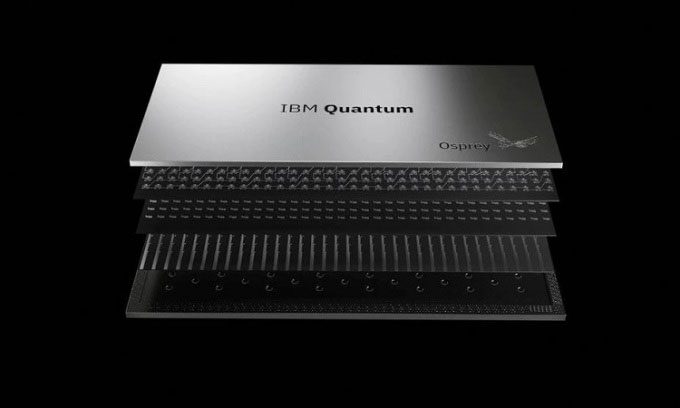The Osprey Quantum Computer has three times the number of qubits compared to IBM’s previous record-holder, the Eagle, from last year.

IBM’s 443-qubit Osprey quantum processor. (Photo: IBM)
IBM has announced the launch of the most powerful quantum processor designed to “address previously unsolvable problems,” as reported by Silicon Republic on November 9. The Osprey processor, featuring 433 qubits (units of quantum information), is more powerful than any previous processor of its kind and is over three times stronger than the company’s last year’s introduction, the Eagle (127 qubits). This machine has the potential to perform complex quantum calculations that exceed the capabilities of traditional computers. IBM stated that the number of bits required to represent a state on the Osprey far surpasses the total number of atoms in the universe.
Dr. Darío Gil, Vice President and Director of Research at IBM, mentioned that the company will continue to expand and enhance quantum technology through hardware, software, and data integration to meet the greatest challenges ahead. He believes that this machine will lay the groundwork for the upcoming era of quantum supercomputing.
The Osprey was introduced at IBM’s annual Quantum Conference held on November 9. Here, the company announced a series of new products developed in the quantum field, from software updates to noise reduction processing in quantum computers. IBM also announced a partnership with Vodafone to explore quantum-safe cybersecurity. Quantum computing is an emerging technology field with wide-ranging applications, including encryption, cybersecurity, artificial intelligence, financial modeling, and even the discovery of new electronic materials.
According to Jay Gambetta, Vice President of IBM Quantum, Osprey is the largest quantum processor to date. Like its predecessor, the Eagle, Osprey includes multi-layer cabling to provide flexibility for routing and device layout while integrating filtering functions to reduce noise and enhance stability. “We are also introducing a third-generation control system that can manage 400 qubits on a chip at a lower cost than previous generations,” Gambetta shared.



















































